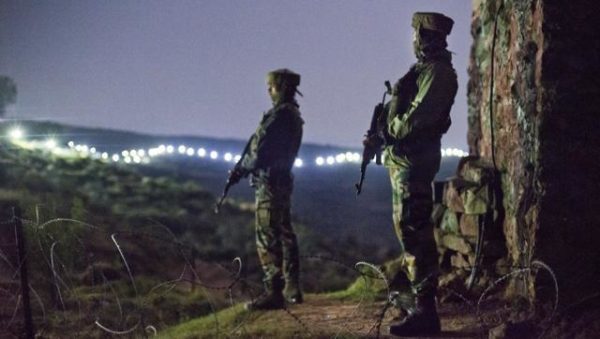On the Line of Control (LoC), life is no picnic.
Yet a year ago, soldiers could break the monotony of keeping the troubled border under watch with occasional leisure. Sometimes, this meant, a game of chess or carrom. Or, flipping through a Bollywood glossy. Soldiers would even soak in the breathtaking beauty of the treacherous mountains.
Back then, when this correspondent toured the LoC for a week, things may not have been rosy but they weren’t this tense. Pakistani provocations had compelled India to shed a culture of restraint and lift a self-imposed restriction on using artillery guns. Border violations peaked in intensity and numbers last September, leaving the 2003 ceasefire in tatters.
But the LoC was never as volatile as it is now in the aftermath of Thursday’s surgical strikes by India’s Special Forces, the first direct military response to the Uri attack that left 19 men dead. “The strikes across the LoC are only the first step. It is an ongoing operation and we expect and are preparing for a retaliation,’’ a Valley-based officer said.
Life of men guarding the de facto border has undergone a sea change, as the army is on highest alert level to deal with a counter-offensive from Pakistan. There are serious concerns about hostilities escalating. So there’s absolutely no question of soldiers tossing a volleyball around, watching TV or finding time to prepare for a promotion exam. Apart from leave restrictions amid heightened tensions, they are also getting less sleep, say army officers serving at the LoC. “Leisure activities are totally ruled out. The focus is on operational readiness and nothing else,” points out an officer on the condition of anonymity.
If soldiers were getting six hours of sleep before hostilities grew, they are now making do with barely four hours.
Another officer explains, “Sleep is a casualty as we want maximum manpower available at all times. We have to guard all flanks, given the build-up on the other side.”
The army has intensified patrolling along the LoC and is keeping a cautious watch on a maze of routes infiltrators could take. Rogue border action teams could strike anytime — remember Hemraj’s beheading and the cold-blooded killing of five Indian soldiers in Poonch three years ago. “When the situation is normal, you can sometimes afford to man infiltration routes selectively. That could be suicidal now,” says the officer.
The army’s contingency plans are in place and the possibility of a flare up has been factored in. How Pakistan reacts is anybody’s guess. A senior army officer in Delhi says no matter what course the adversary takes, the army is prepared to deal with it. But the shadows of Pathankot and Uri loom large.
“We will dominate the conflict at any level of the escalation ladder,” he says, adding Pakistan may respond now, in a week or several months later. Battle readiness is constantly being reviewed. India cannot afford another Uri.
The biggest challenge for commanders on the ground is to strike a balance between keeping the troops battle ready and ensuring they aren’t worn out. “You can’t keep them on highest alert level for a year. We are monitoring how things unfold,” he says.
Last September, this correspondent visited several posts along a 224-km stretch of the 740 km-long LoC. At one such post in Poonch sector, I met a 22-year-old Gorkha soldier who had just returned from a punishing patrol.
There was chicken and rice for dinner but he was keener on reading some current affairs’ magazines tucked under his pillow. He was trying to make time to study for an exam that could fulfil his dream of becoming an army officer. His commanding officer called me a few months later breaking the news that the soldier had passed.
Some of those dreams may be on the back burner.
A lot has changed at the LoC except the stunning landscape dotted with towering ridges, dense pine groves, lush valleys and maize fields.



Leave a reply